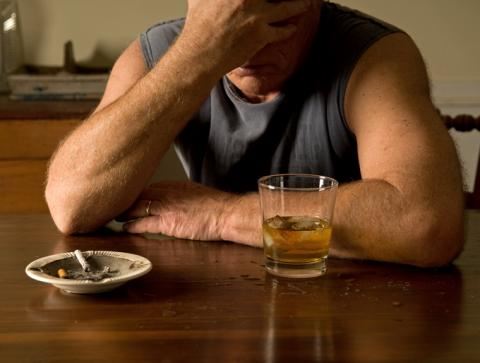A new study published in JAMA Psychiatry suggests that alcohol misuse has increased significantly in the United States. The authors compared data from 2001-2002 and 2012-2013 and documented substantial increases in the prevalence of past 12-month drinking, high-risk drinking, and alcohol use disorder (AUD).
AUDs overall shot up by almost 50 percent, from 8.5 percent in 2001-2002 to 12.7 percent only eleven years later. “Alcohol use and specifically high-risk drinking, which often leads to alcohol use disorder (AUD), are significant contributors to the burden of disease in the United States and worldwide,” the study's authors conclude.
They note that alcohol misuse is a significant driver of mortality from a plethora of ailments: “fetal alcohol spectrum disorders, hypertension, cardiovascular diseases, stroke, liver cirrhosis, several types of cancer and infections, pancreatitis, type 2 diabetes, and various injuries.”
Overlooked Health Crisis
Understandably, a lot of attention is currently directed at the opioid epidemic which has become a national emergency. The official number of drug overdose fatalities reached a record of 52,404 in 2015 and is likely to have gone up again in 2016, but the statistics make clear that alcohol kills even more Americans. The Surgeon General reported last year that “alcohol misuse contributes to 88,000 deaths in the United States each year; 1 in 10 deaths among working adults are due to alcohol misuse.”
The new study suggest that one in eight Americans has an alcohol problem. “This should be a big wake-up call,” David Jernigan, director of the Center on Alcohol Marketing and Youth at the Johns Hopkins Bloomberg School of Public Health told Bloomberg.com. “Alcohol is our number one drug problem,” said Jernigan, who was not involved in the research.
Bridget Grant, a researcher at the National Institute on Alcohol Abuse and Alcoholism and lead author of the study, told Bloomberg.com, “We haven’t seen these increases for three or four decades.”
Increases in alcohol use, high-risk drinking, and alcohol use disorder for the periods studied were also statistically significant across sociodemographic subgroups. Increases in all of these outcomes were greatest among women, older adults, ethnic minorities, and individuals with lower educational level and family income.
Deaths of Despair
In 2015, two Princeton economists argued that middle-aged white Americans without a college degree were now facing “deaths of despair”—suicide, overdoses from drugs and alcohol, and alcohol-related liver disease. They blamed financial insecurity bearing down on the baby boomer generation which was raised on the promise of a better life and secure retirement.
Dr. Grant seems to agree. “I think, the increases are due to stress and despair and the use of alcohol as a coping mechanism,” she told the Washington Post.
We should keep in mind that the study's data only goes up to the year 2013. If the trend has continued in the last four years, the alcoholism epidemic is even worse by now.
Severe alcohol use disorder requires medically supervised detoxification and modern addiction treatment. Decision Point takes a contemporary view of substance use disorders, treating addiction as a chronic disease and not a choice. By assessing the true nature of each patient's condition, including co-occurring mental health issues, the Decision Point team can design an effective treatment plan that addresses the needs of the individual.
If you or a loved one is in need of alcoholism treatment in Arizona, call Decision Point Center today at (844) 292-5010.


